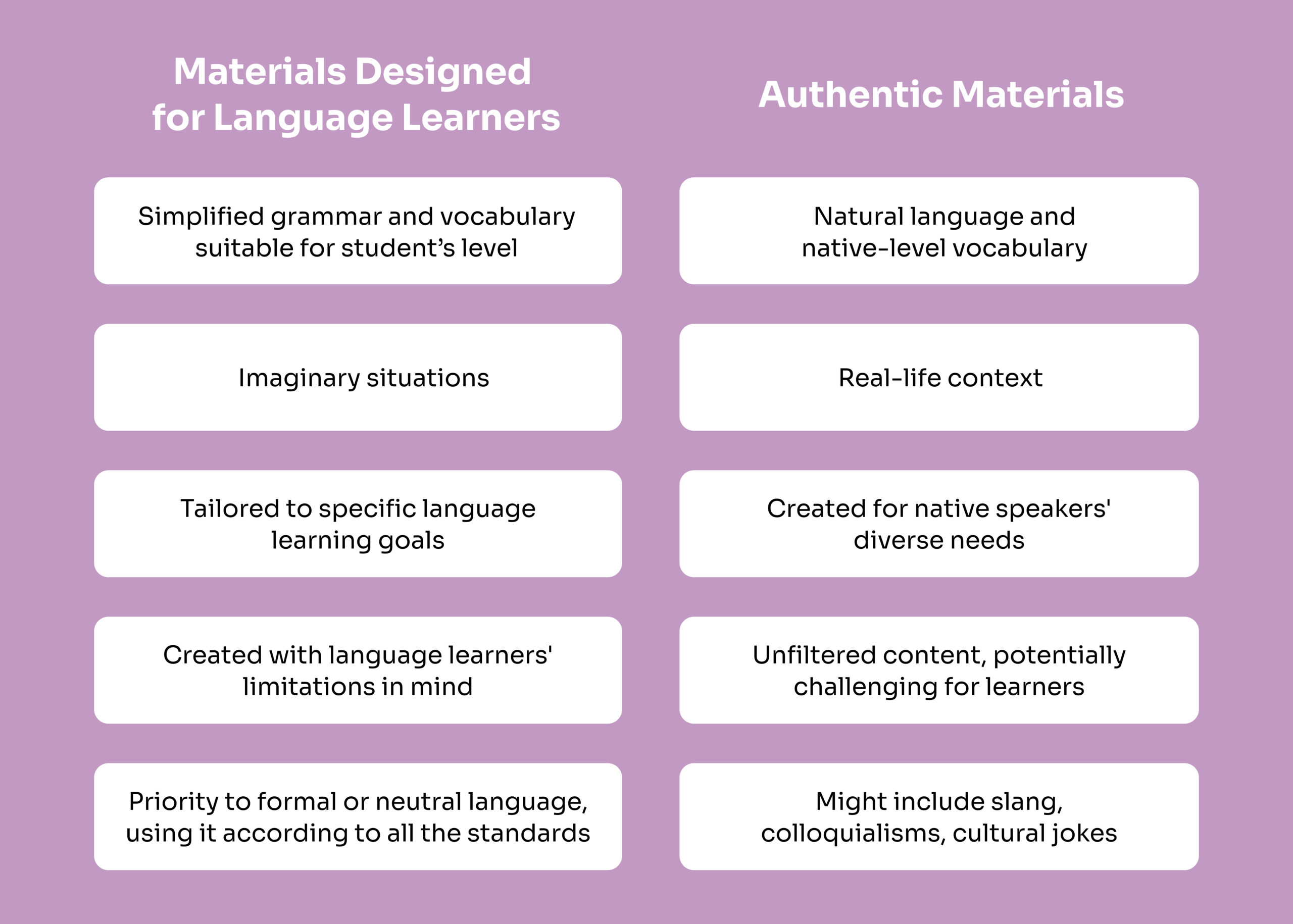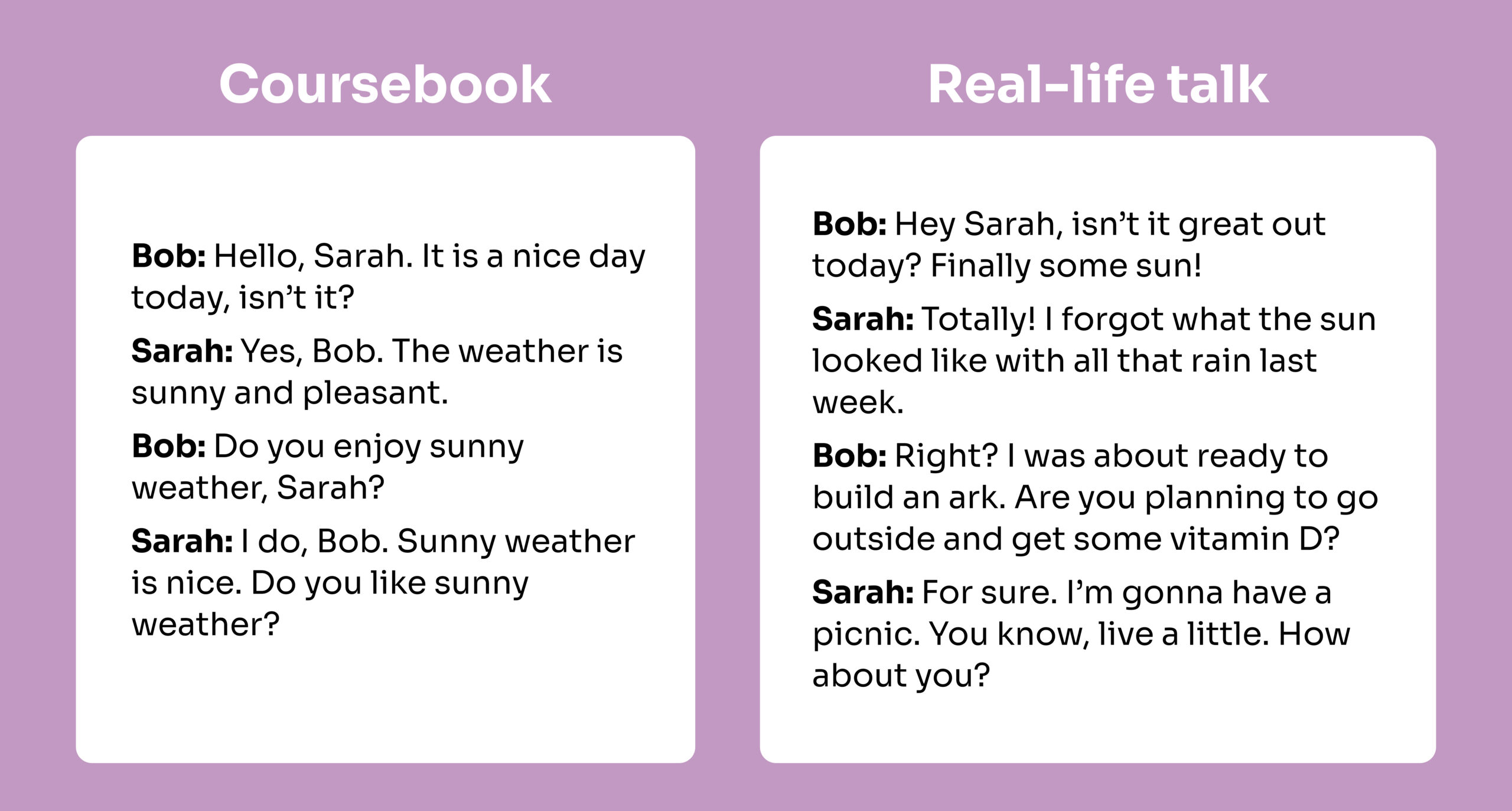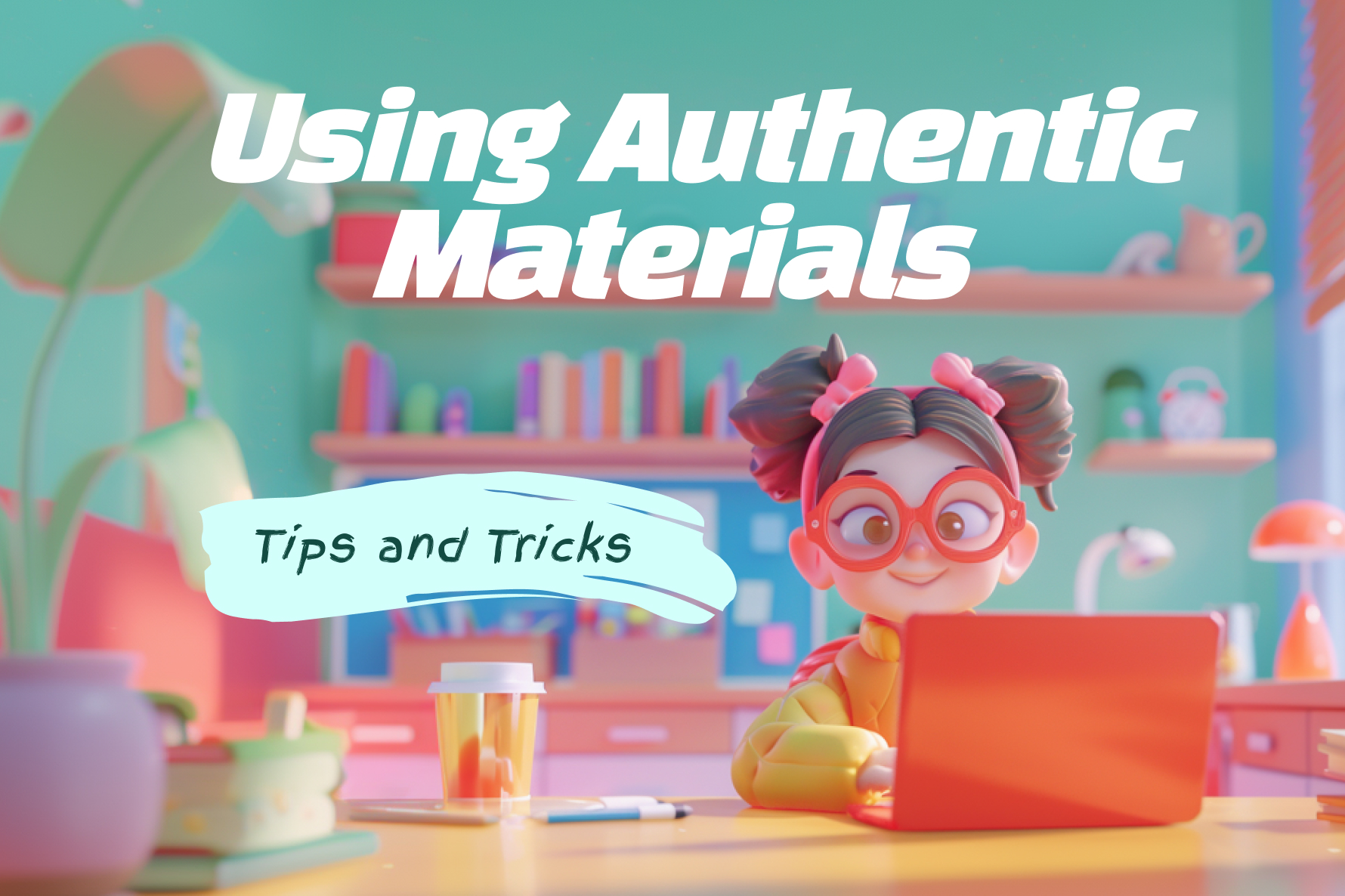What are authentic materials for foreign language teaching?
Authentic materials include text, audio, and video content not specifically made for language learners, but rather created for native speakers for various purposes such as education, promotion, entertainment, sharing information and news, and so on.

Some examples of authentic materials include:
Text materials:
- Newspaper articles
- Magazine articles
- Books
- Blogs
- Social media messages, posts and comments
- Leaflets (for pills, for example)
- Menus
- Recipes
- Reviews
Video and audio materials:
- TV shows
- YouTube videos
- Podcasts
- Reels
- Songs
- News
- Radio programs
- Movies
- Video game streams
- Speeches and lectures
- Stand-up shows
- Interviews
Why is it important to use authentic materials in ESL/EFL classes?
First of all, students get so ecstatic and proud when they realize they can already understand REAL language. Show them that they can do it!
Yes – no doubt – using materials designed specifically for language learners is the foundation of the learning process. It helps to introduce and practice new grammar, vocabulary, and language structures. However, outside of the classroom, there is the real world with real-life conversations that our students will need to deal with at some point. So, using authentic materials in classes is a gentle way to get your students ready for it.
Moreover, authentic materials are often more relevant to students’ interests than the texts from course books, because they are more up-to-date and the variety of them seems infinite.

Can I use authentic materials for the lower proficiency levels?
You definitely can do it!
There are plenty of authentic materials that can be used to teach lower-level students. It just takes a little bit more time to find them. Here are some ideas on where you can look for them:
- Short and simple Instagram and Twitter posts;
- YouTube Shorts and Insta Reels: they often include keywords and only the main points or ideas of a topic;
- Ads and commercials: they usually have a lot of visual information that will help students understand the idea better;
- Short reviews on different websites like Shein, or in AppStore;
- Simple songs in which the same words are repeated many times.
If you want to use authentic materials with the lower-level students, you may need to:
- Adapt the materials a bit: simplify the original materials by shortening texts, selecting only some parts of them, focusing on the main ideas, or highlighting key sentences;
- Use Subtitles or Transcripts: for video and audio materials, provide subtitles, or offer transcripts for follow-up reading;
- Provide more visual aids: pictures, illustrations, and multimedia to support comprehension and engagement.
How do I choose the best materials for my students?
There are a few criteria that will help you choose the best material for your student:
Relevance. Ask your student what they like to read, watch, and listen to, and what their hobbies and dreams are; ask them about their life goals and career aspirations and, after that, choose the materials based on this information.
Skills. First, decide what language skill you need to work on. And then choose the materials that will be suitable for that.
For example:
For the skill “Can scan through straightforward, factual texts in magazines, brochures or in the web, identify what they are about and decide whether they contain information that might be of practical use.” (CEFR, 2018), find 4-5 brochures with vacation options, set some criteria according to which the student should choose the best option.
Difficulty. The material shouldn’t be too challenging for the student. You can’t give a lecture about science or an argumentative article about healthcare to a pre-intermediate level student. So, the vocabulary and grammar should still be suitable for the student’s level.
Credibility. Verify the credibility and reliability of the sources of the authentic materials that you plan to use.
Length. You don’t have to use the whole article/video/podcast, select the part that contains the most relevant and useful information and work with it.
It might be just:
50-200 words for A1-A2
200-350 words for B1-B2
350-500 words for C1-C2
Cultural authenticity. It’s a huge bonus if the materials you give reflect the mentality, sense of humor, lifestyle, and traditions of the target language speakers.
Language formality. Make sure the formality of the materials is matching to the student’s needs. For learners who need to develop conversational skills or informal writing, you can select blog articles, posts, and interviews with casual conversations. However, for learners who need to develop skills for formal and professional communication, it’s better to choose business correspondence, academic journals, professional presentations and negotiations, and so on.
Conclusion
Authentic materials should not replace the educational material designed particularly for language learners, but they can be a great addition to the learning process, preparing your students for dealing with the target language in real life. There is a great variety of authentic materials for all levels in all possible forms and styles, so you need to analyze your student’s needs and goals and decide what skill you want to work on before choosing the material for your classes.
Creating lessons based on authentic materials usually takes hours, but it can be a matter of minutes if you do this with the help of AI tools at twee.com.
Sign up and try it for free now:

